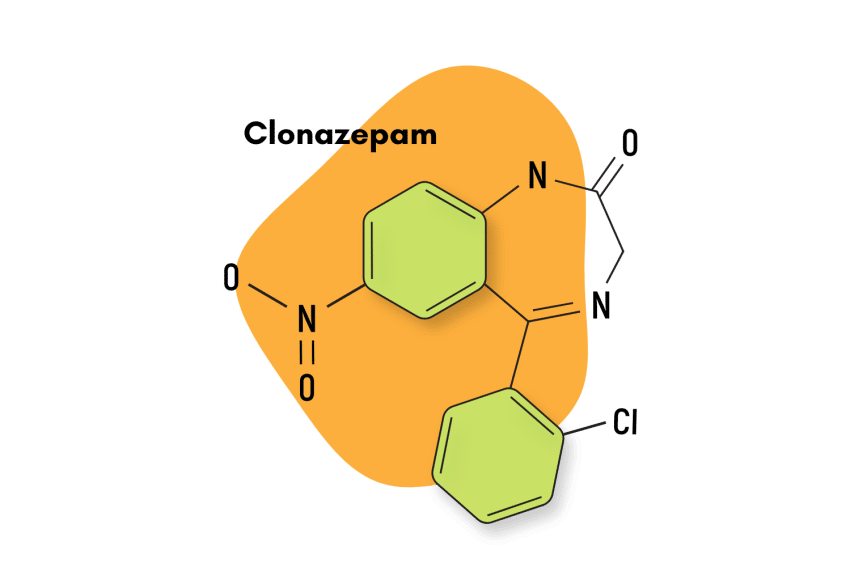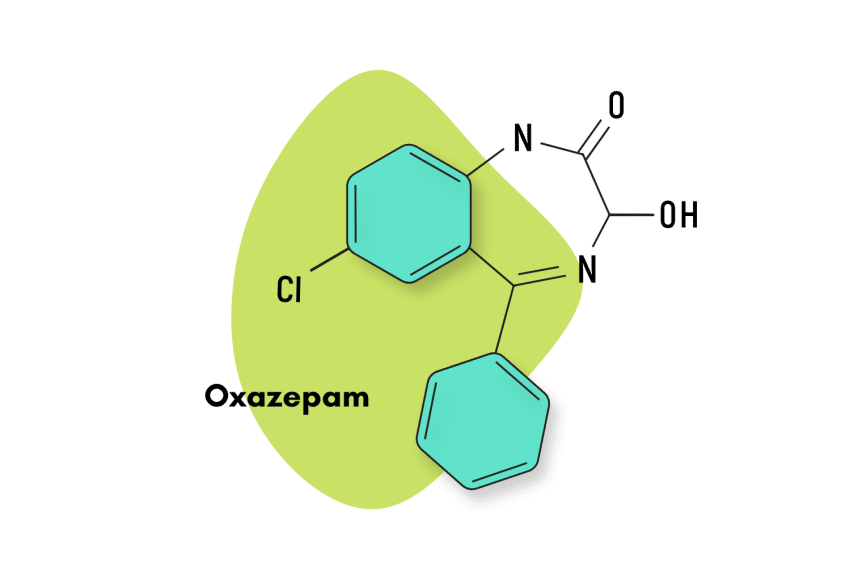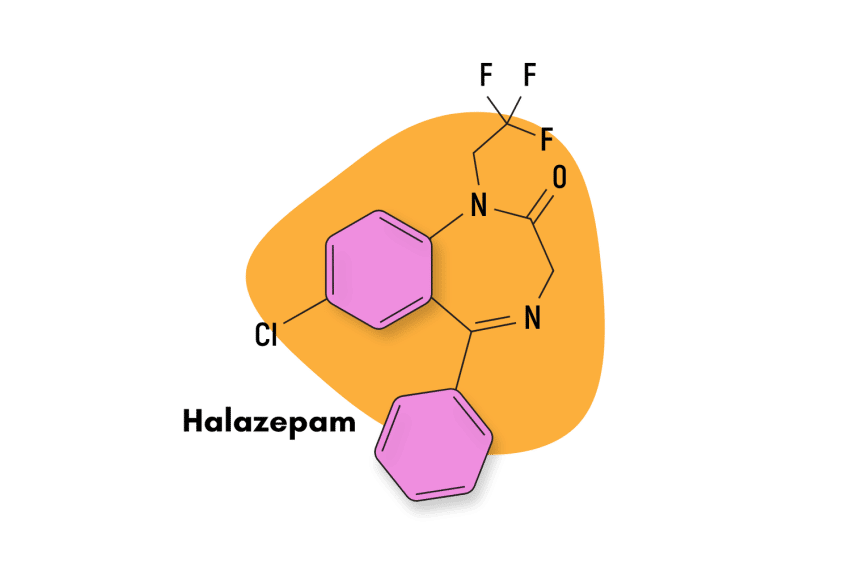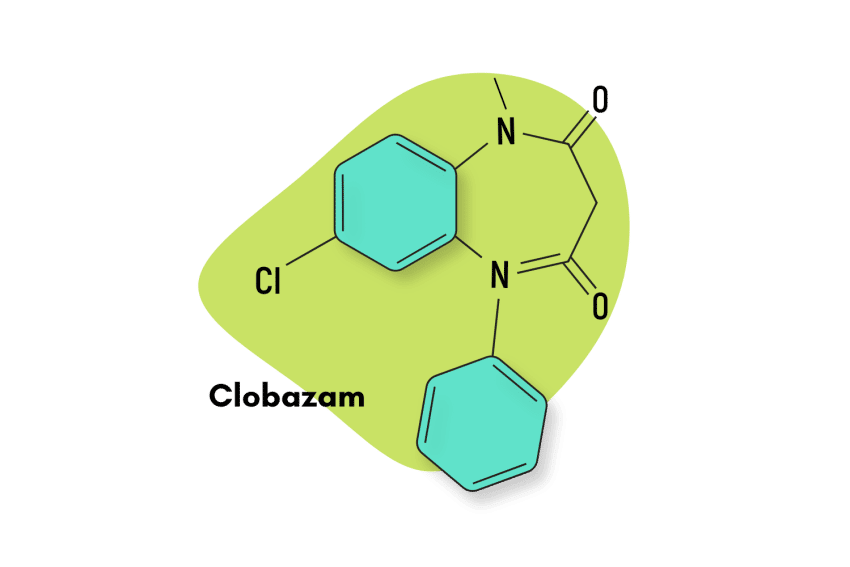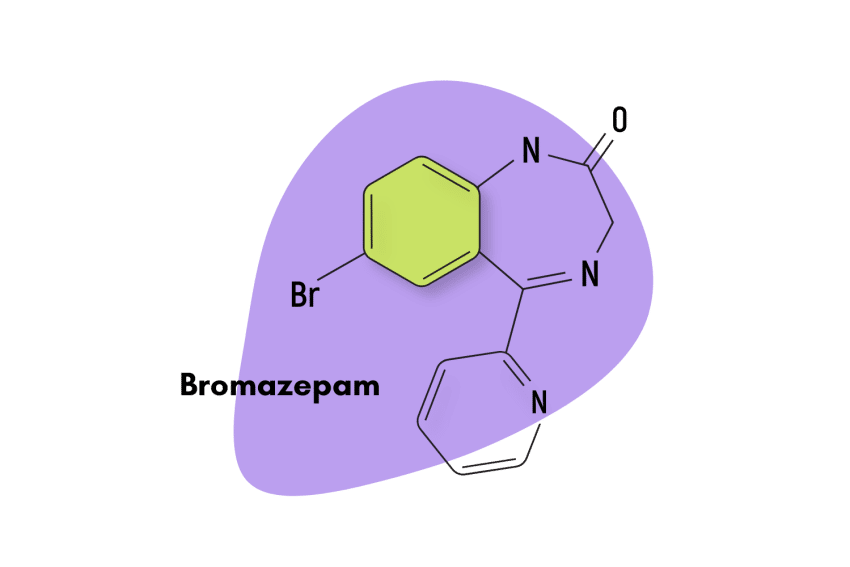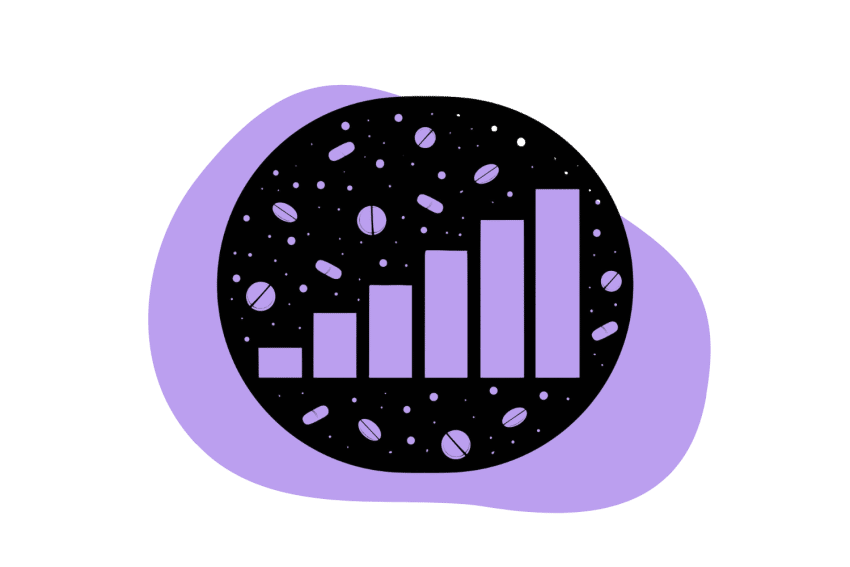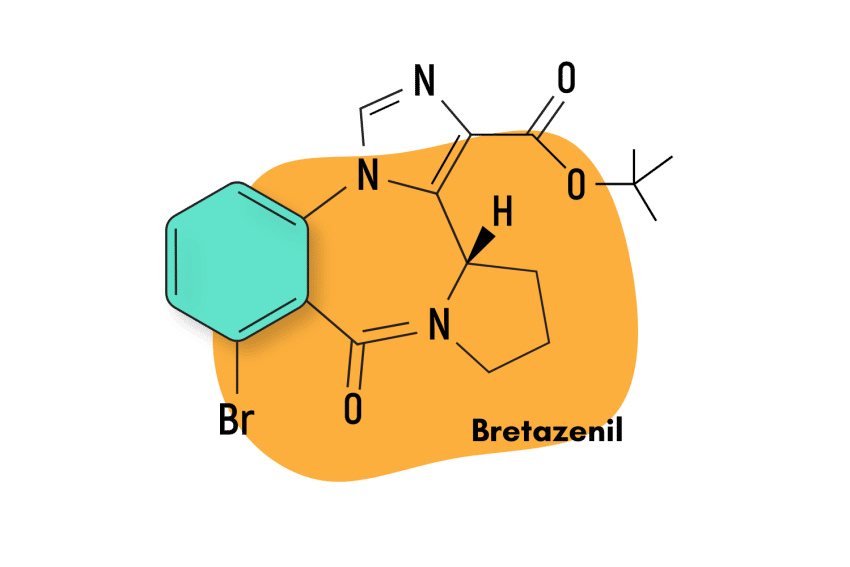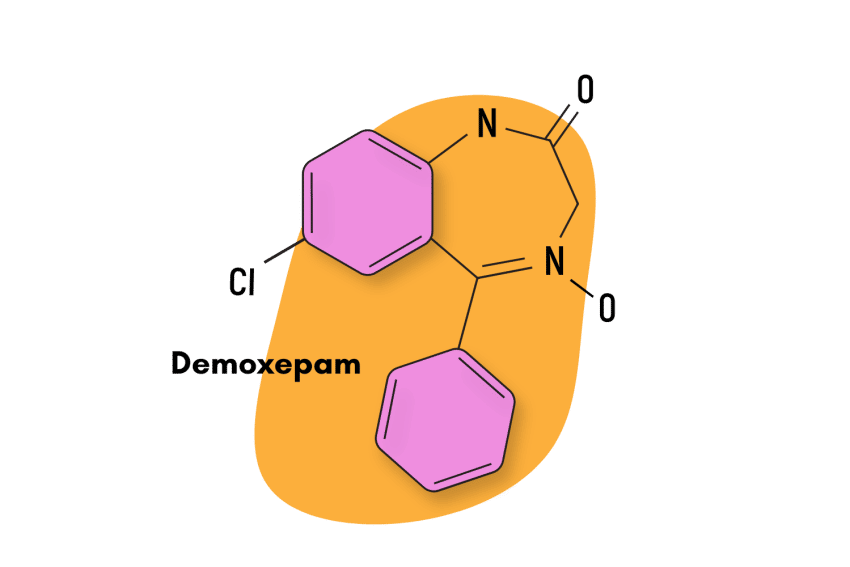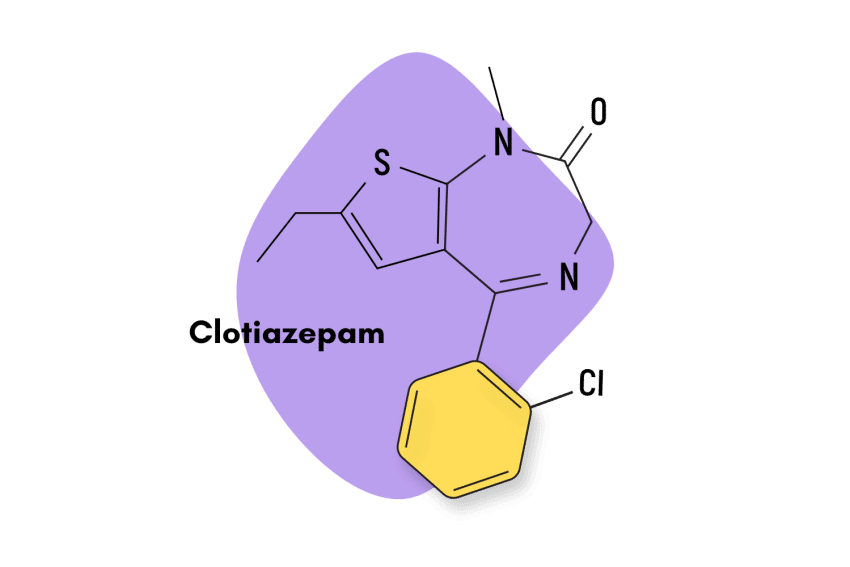Nitrazolam: A Purely Designer Benzodiazepine
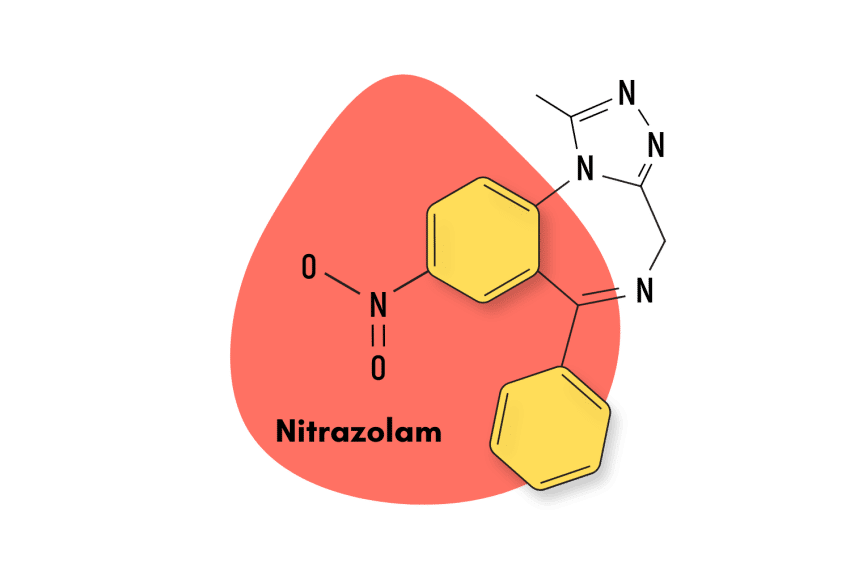
Nitrazolam is a highly potent benzodiazepine derivative closely related to other designer benzodiazepines like Clonazolam or Flunitrazolam. The drug is a derivative of other prescription benzodiazepines like nitrazepam, with sedative, muscle relaxant, and anxiolytic properties.
The drug was first detected on the drug market in 2015. Nitrazolam is a class C drug in the United Kingdom under the Psychoactive Substances Act. It is not approved by the US Food and Drug Association (FDA).
However, the drug is being sold online as a designer drug or “research chemical.”
Nitrazolam is highly potent and can have serious side effects like severe sedation and respiratory failure. Extreme cases may require flumazenil — an antidote for benzodiazepine toxicity.
The drug is available in tablet or powder form.
Nitrazolam Specs
| Status | Not approved |
| Common Dosage | 1 to 5 mg |
| PubChem ID | 20317278 |
IUPAC Name: 3-methyl-12-nitro-9-phenyl-2,4,5,8-tetraazatricyclo[8.4.0.0^{2,6}]tetradeca-1(10),3,5,8,11,13-hexaene
Metabolism: The process of reduction and hydroxylation into hydroxynitrazolam is responsible for metabolizing Nitrozolam. The metabolism occurs in the liver, excreting both the parent compound and its metabolites in the urine [1].
Duration of Effects: It starts to work in 20 to 60 minutes, and the effects of the drug last for around 1 to 8 hours [1].
What Is The Dose Of Nitrazolam?
The drug is available in doses of 1 mg and 5 mg, mainly used for experimental and research purposes. It is available in the form of powder, tablet, or liquid.
Benzodiazepine Dosage Equivalency Calculator
**Caution:** Benzodiazepines have a narrow therapeutic window. Dose equivalents may not be accurate in higher doses.
This calculator does not substitute for clinical experience and is meant to serve only as a reference for determining oral benzodiazepine equivalence.
Please consult a medical practitioner before taking benzodiazepines.
How Does Nitrazolam Work?
Gamma-aminobutyric acid (GABA) is the major inhibitory neurotransmitter in the body. It works by binding to the GABA-A receptor and opening the chloride channel to cause hyperpolarization. The hyperpolarization of the cell leads to its sedation, hypnosis, muscle relaxation, and anticonvulsant activity.
Nitrazolam is an intermediate-acting benzodiazepine derivative in the triazolobenzodiazepine class. Since its main derivative is the drug nitrazepam, it works similarly.
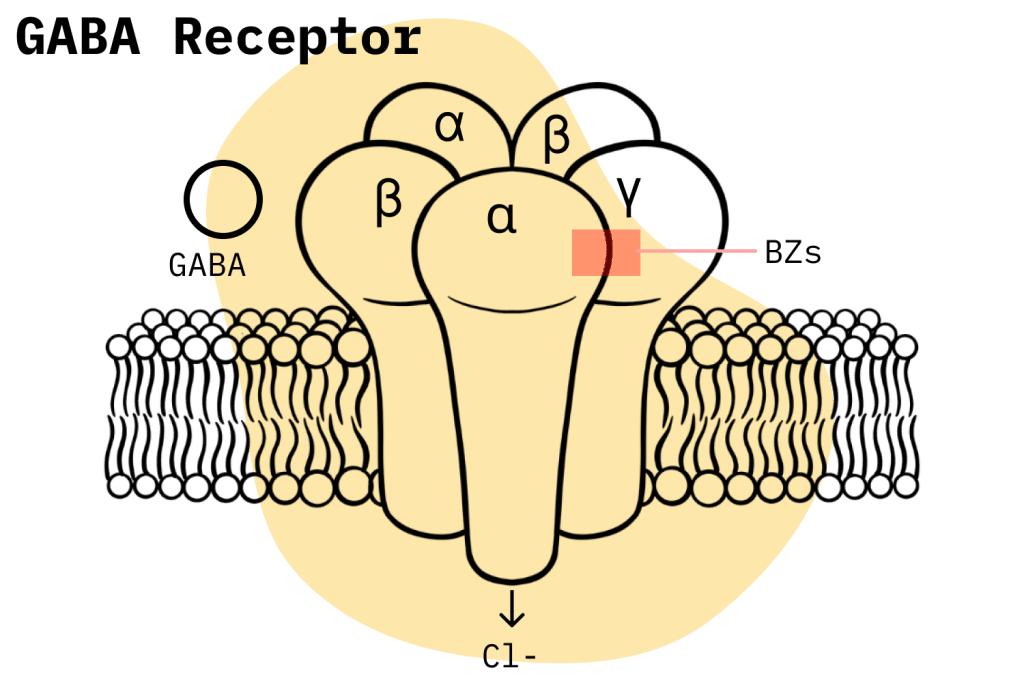
However, many consider it to be more potent.
It binds to the benzodiazepine binding site of the GABA-A receptor and increases the inhibitory effects of GABA. This increase in the activity of GABA potentiates the binding of GABA to the GABA-A receptor. The benzodiazepine binding site is at the interface between the alpha and gamma subunits of the GABA receptor [2].
Is Nitrazolam Safe? Risks & Side Effects
Nitrazolam is a highly potent psychoactive substance that falls under the benzodiazepine class. Most places online market this substance as a “designer benzodiazepine.” The FDA has not licensed the drug for medicinal usage, and various nations view it as an addictive narcotic.
Despite having a pharmacological profile that is similar to other benzodiazepines like clonazepam, the medicine has not been thoroughly investigated. As a result, adverse effects like respiratory failure and extreme drowsiness are very prevalent. Due to these negative effects and the medication’s limited therapeutic range, it is dangerous to consume.
Long-term drug usage can lead to drug dependence and withdrawal symptoms. These include pains in the stomach, anxiety, sweating, trembling, blurred vision, loss of concentration, confusion, and dizziness.
Side Effects of Nitrazolam
The side effects of nitrazolam overlap with the benzodiazepine class as a whole. This whole family act as allosteric modulators of the GABA-A receptors, which results in feelings of sedation, fatigue, and amnesia.
Common side effects of nitrazolam include:
- Drowsiness, dizziness, fatigue, feeling sleepy, and headache
- Low mood, depression, and suicidal thoughts
- Muscle weakness, joint pain, frequent falls, and injuries
- Nausea, vomiting, and heartburn
- Nervousness
- Problems associated with cognition, such as thinking, reasoning, attention, and memory
- Respiratory issues
- Speech and vision problems
- Tachycardia
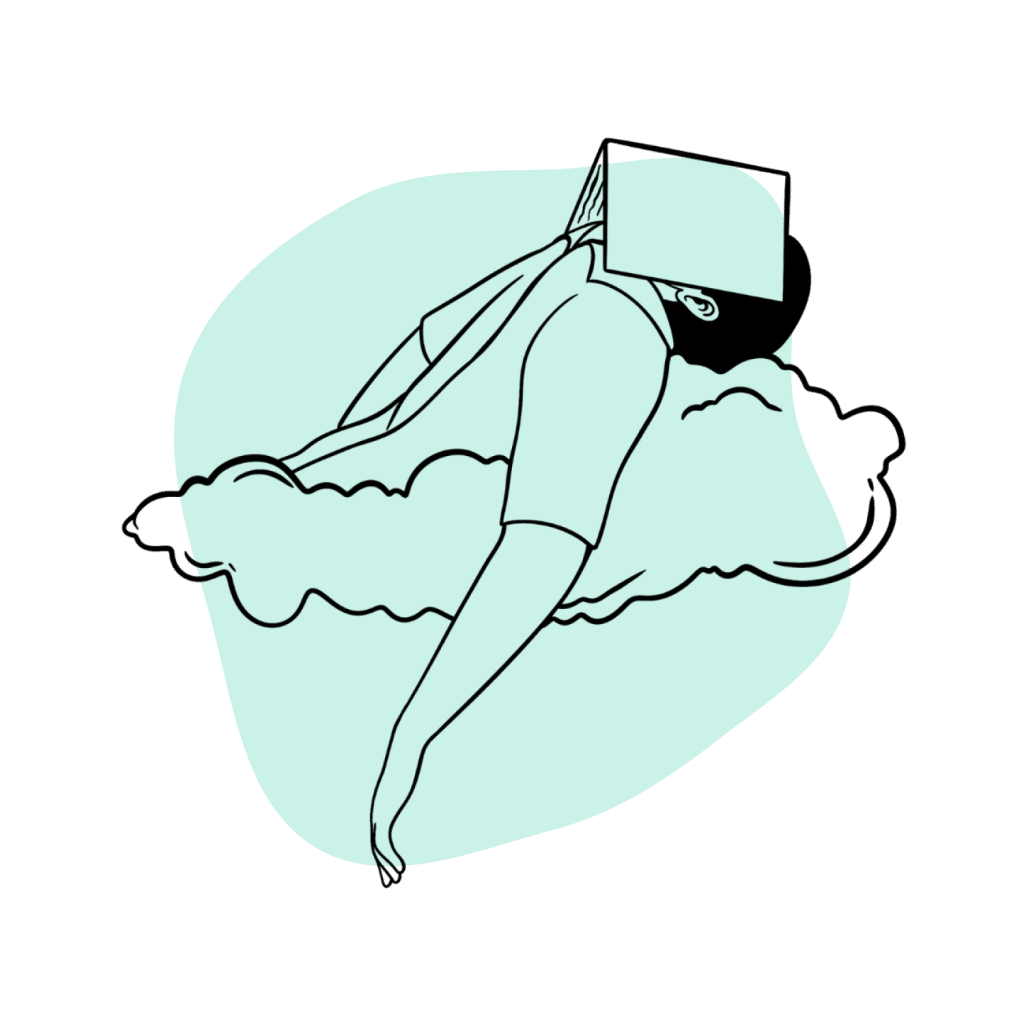
Serious side effects of nitrazolam:
There are cases reporting serious side effects requiring critical care admission and intubation with mechanical ventilation. Flumazenil is an antidote for overdose and is often a part of the treatment of severe toxicity associated with nitrazolam.
It’s important to seek medical help immediately if you experience the following symptoms:
- Chest pain
- Coma or loss of consciousness for a period of time
- Psychotic features such as hallucination and delusions
- Suicidal intention, or intention of harming others
- Severe respiratory depression
- Signs of severe allergic reactions such as rashes, hives, swelling of face, throat, tongue, lips or eyes, and hoarseness of voice
- Pounding or irregular heartbeat
- Signs of liver problems, such as yellowish discoloration of the skin and eyes,
Harm Reduction: Nitrazolam
Since the drug is not approved for clinical use, it is better to use other approved benzodiazepines under prescription, such as clonazepam, alprazolam, and diazepam. However, the following instructions can reduce the risk associated with using nitrazolam.
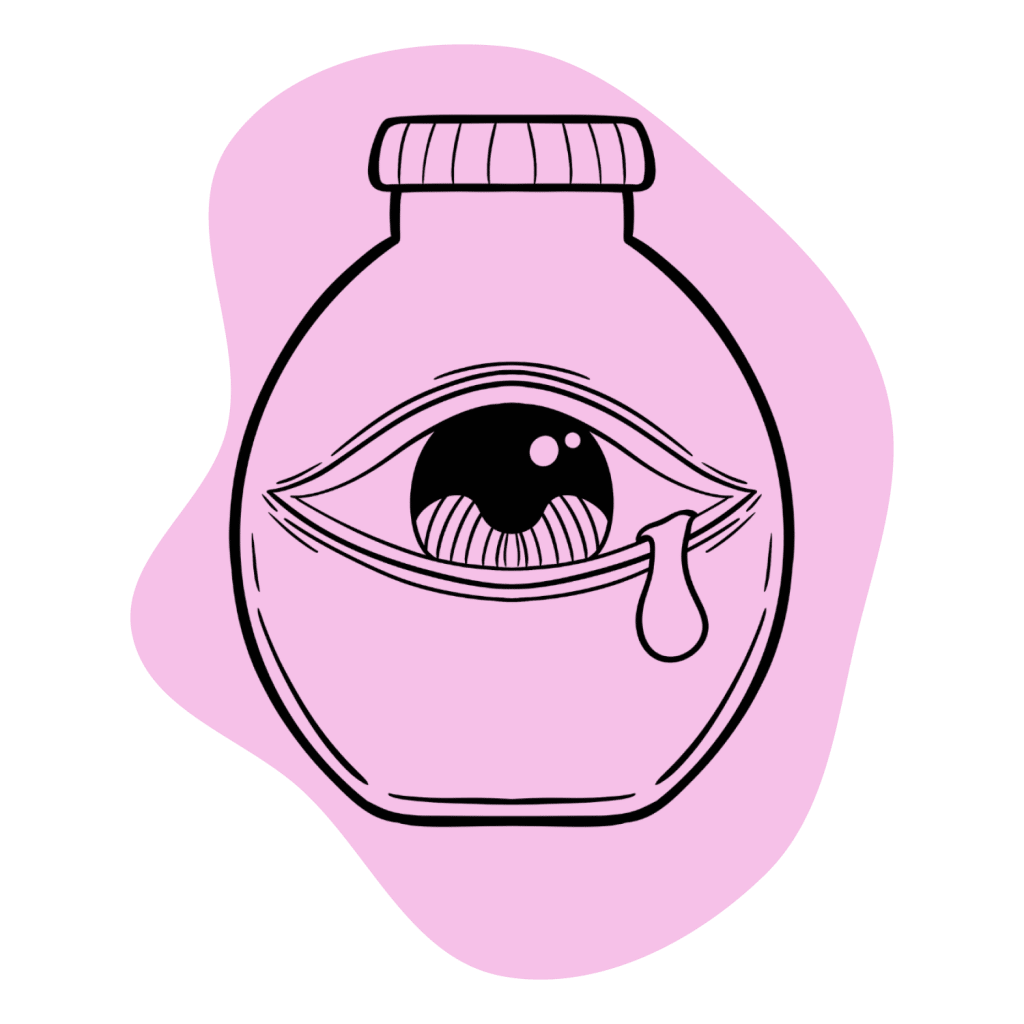
Understand the Risks of Research Chemicals
The drug is not well studied and is not approved for general use, so you’re not going to be able to get a prescription for it. This drug exists purely on illegal markets — take at your own risk.
The problem with research chemicals and designer drugs is that they’re often made in clandestine labs with little to no GMP standards. This means nitrazolam pills could contain all sorts of contaminants or adulterants, and the actual potency may be uncertain.
Taking A Lower Dose For A Shorter Period
Nitrazolam is a potent drug with a risk of dependency, and you might develop withdrawal symptoms after stopping the drug abruptly. It is far safer to take a lower dose for a shorter period and gradually reduce the dose of the drug before stopping.
You can follow these instructions to avoid the risk of dependency.
Avoid Activities With A High Risk Of Injuries
The drug can cause drowsiness and sedation. So, you should avoid certain activities with a high risk of injuries, such as driving, operating electrical equipment, working with heavy machinery, swimming, and performing surgeries.

Avoid Certain Medications While Taking Nitrazolam
It is better to avoid other drugs that cause sedation, such as benzodiazepines, antihistamines, opioids, GHB, and alcohol, while taking nitrazolam. Sedation and breathlessness can worsen with these drugs.
Similarly, you should avoid drugs affecting the metabolism of nitrazolam, such as antibiotics, antifungals, anticonvulsants, and antitubercular drugs. These drugs can either increase toxicity or reduce the effects associated with nitrazolam.
Avoid Nitrazolam In Certain Medical Conditions
You need to inform your doctor if you have any health conditions, as nitrazolam may worsen them.
You need to be especially careful before consuming nitrazolam if you have any of the following medical conditions:
- Brain or spinal cord lesions affecting respiration.
- Chronic kidney and liver problems
- Narrow-angle glaucoma
- Pregnancy and lactation
- Psychiatric conditions such as schizophrenia and severe depression
- Respiratory problems such as COPD and asthma
Similar Benzodiazepine Derivatives
Many benzodiazepine derivatives on the market fall under the benzodiazepine class with activity similar to nitrazolam. These are the derivatives of the existing approved benzodiazepines — formed by slight changes in the chemical structure of the compound
Some of the common benzodiazepine derivatives with activities similar to those of nitrazolam are:
- 1,4- Benzodiazepines — Few examples of drugs under this group are: Diclazepam, Flubromazepam, Nifoxipam, Meclonazepam, Cloniprazepam, Fonazepam, Norflurazepam, Nitemazepam, and Phenazepam.
- Triazobenzodiazpeines — Drugs under this class are: Bromazolam, Clonazolam, Flualprazolam, Flubromazolam, and Nitrazolam
- Thienotriazolodiazepines — This class includes drugs like: Etizolam, Metizolam, and Deschloroetizolam
Nitrazolam vs. Other Short To Intermediate-Acting Benzodiazepines [1, 3]:
| Nitrazolam | Alprazolam | Bromazepam | Diazepam | Chlordiazepoxide | |
| Chemical composition | 3-methyl-12-nitro-9-phenyl-2,4,5,8-tetraazatricyclo[8.4.0.0^{2,6}]tetradeca-1(10),3,5,8,11,13-hexaene | Benzodiazepine with a triazole ring attached to its structure | 1,4-benzodiazepine | 1,4-benzodiazepine | 1,4-benzodiazepine |
| Route of administration | Oral | Oral | Oral | IV, IM | Oral, IV |
| Onset of action | 20-60 minutes | 20 to 60 minutes. | 60 minutes | 15 to 60 minutes. | 1 to 2 hours (oral) |
| Peak concentration: | 1 to 2 hours. | 1 to 2 hours. | 1 to 4 hours. | 1 to 1.5 hours. | 2 hours |
| Duration of effects | Intermediate-acting (8 to 24 hours) | Short-acting (6 to 27 hours) | Intermediate-acting (8 to 19 hours) | Long-acting (20 to 80 hours) | Long-acting (36 to 200 hours) |
| Mechanism of action | GABA-A receptor agonist | GABA-A receptor agonist | GABA-A receptor agonist | GABA-A receptor agonist | GABA-A receptor agonist |
| Medical Uses | Panic disorders, anxiety, muscle spasms, Sleep disorders | Panic disorders, anxiety disorders, insomnia | Anxiety disorder, alcohol withdrawal | Seizures, alcohol withdrawal, insomnia, muscle spasms, panic disorder, anxiety disorders | Panic disorders, alcohol withdrawal, anxiety disorders |
Natural Alternatives To Benzodiazepines
Few natural alternatives cause relaxation and sedation like those of benzodiazepines. Additionally, these alternatives are not well studied for a recommendation, with few exceptions.
Some natural alternatives to nitrazolam are
1. Taurine
Taurine works by increasing GABA synthesis and release. Additionally, it binds to GABA receptors to have sedative and inhibitory effects. Foods high in taurine include chicken and seafood [4].
2. Chamomile tea
This is a common tea made from chamomile flowers that many think enhances GABA activity by binding to the same receptor as benzodiazepines. Tea has many well-known health advantages, including a calming effect [5].
3. Kava
Traditional tea called kava (Piper methysticum) has calming and sedative properties without the danger of dependence or other negative side effects like drowsiness, headaches, or diarrhea. Many cultures have also used kava for various health benefits [6].

4. GABA Supplements
Taking a variety of GABA supplements can raise the amount of GABA in the blood. For the treatment of anxiety and sedative effects, these supplements are unlikely to be as successful as benzodiazepines. This is due to the fact that the Blood Brain Barrier (BBB) prevents the blood’s elevated GABA levels from reaching the brain’s tissues, where they would be useful.
According to some studies, higher doses of GABA appear to be effective [7].
5. Gotu Kola
Centella asiatica, a traditional Chinese herb, also called gotu kola, has a long history of use to treat stress, anxiety, and other mental health issues. By having a calming effect, it has also been helpful in treating sleep disorders [8].
6. Psychobiotics
Food items called “psychobiotics” contain bacteria that are good for treating or preventing mental health issues. Two typical bacteria that produce GABA include Lactobacillus brevis and Bifidobacterium dentium. GABA has calming effects that help treat and prevent anxiety.
Probiotics also lessen stress by lowering the level of stress hormones in the body [9].
7. Essential oils
Some essential oils have calming properties, like vetiver and lavender. They have years of historical use for treating stress, headaches, anxiety, and withdrawal symptoms from alcohol. Additionally, you can blend oils for improved results.
For its effects, inhale or apply to the head and temples as a massage oil [10].
Nitrazolam FAQs
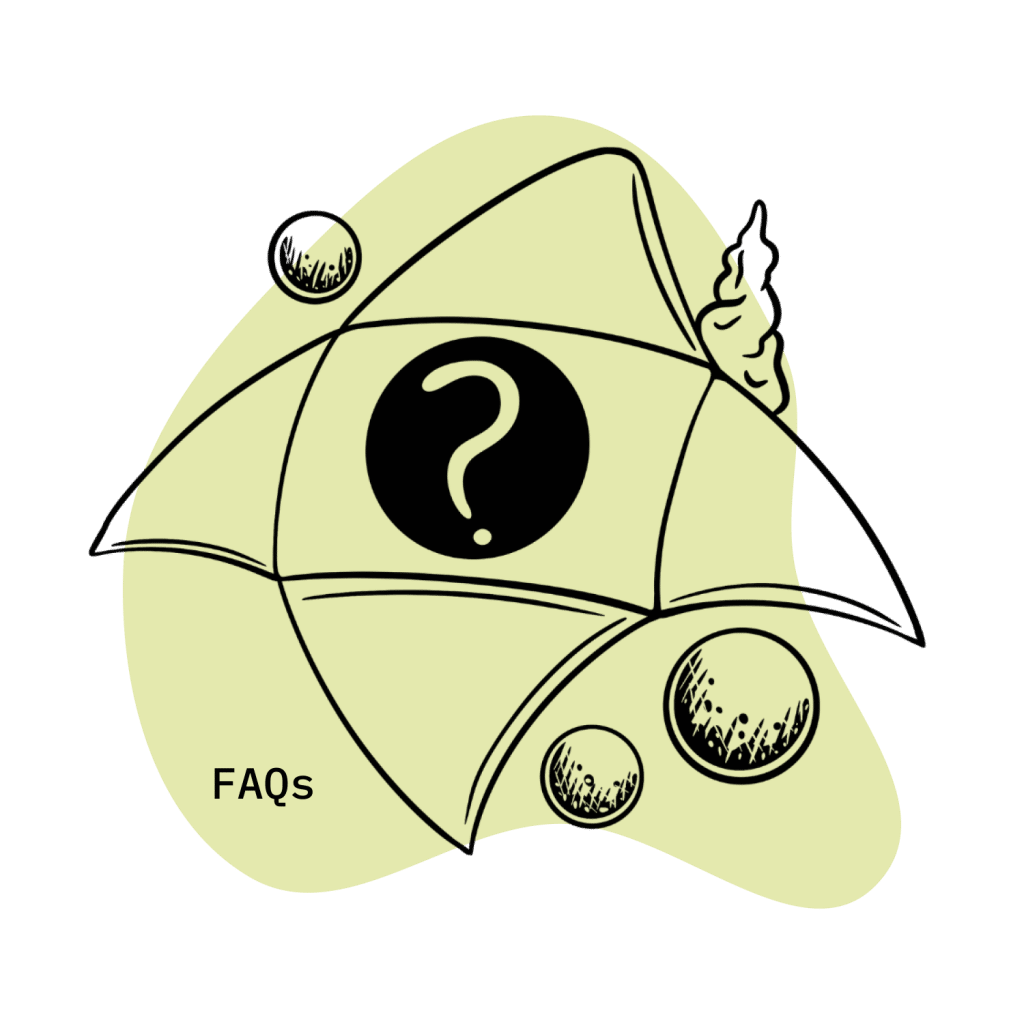
Is nitrazolam approved for clinical use?
Nitrazolam is not approved for therapeutic use and it is a class C drug in the UK under the Psychoactive Substance Act. However, online sales are legal as long as they specify use is for “research purposes only.”
Are there any foods to avoid while using nitrazolam?
You should avoid alcohol intake while taking nitrazolam as it increases the risk of over-sedation and coma. Alternatively, you should avoid caffeine-containing foods such as tea, coffee, and certain beverages while taking nitrazolam as they may reduce the effectiveness of the drug.
Why is nitrazolam referred to as designer benzodiazepine?
Drugs derived from controlled benzodiazepines by altering their chemical composition are “designer benzodiazepines.” Since nitrazolam is a derivative of nitrazepam, it is a designer benzodiazepine by definition.
What are the risks associated with the use of nitrazolam?
Nitrazolam is a highly potent benzodiazepine with a serious risk of side effects such as excessive sedation and muscle relaxation, resulting in deep sleep, respiratory failure, or coma. Additionally, there is a risk of dependence associated with nitrazolam, and you may develop withdrawal symptoms when you abruptly stop the drug intake.
References
- Moosmann, B., & Auwärter, V. (2018). Designer benzodiazepines: another class of new psychoactive substances. In New psychoactive substances (pp. 383-410). Springer, Cham.
- Moosmann, B., Bisel, P., Franz, F., Huppertz, L. M., & Auwärter, V. (2016). Characterization and in vitro phase I microsomal metabolism of designer benzodiazepines—an update comprising adinazolam, cloniprazepam, fonazepam, 3‐hydroxyphenazepam, metizolam and nitrazolam. Journal of mass spectrometry, 51(11), 1080-1089.
- Gielsdorf, W., Molz, K. H., Hausleiter, H. J., Achtert, G., & Philipp, P. (1986). Pharmacokinetic profile of metaclazepam (Talis®), a new 1.4-benzodiazepine. European journal of drug metabolism and pharmacokinetics, 11(3), 205-210.
- Schaffer, S., & Kim, H. W. (2018). Effects and mechanisms of taurine as a therapeutic agent. Biomolecules & therapeutics, 26(3), 225.
- Mao, J. J., Li, Q. S., Soeller, I., Rockwell, K., Xie, S. X., & Amsterdam, J. D. (2014). Long-term chamomile therapy of generalized anxiety disorder: A study protocol for a randomized, double-blind, placebo-controlled trial. Journal of clinical trials, 4(5).
- Pittler, M. H., & Ernst, E. (2003). Kava extract versus placebo for treating anxiety. Cochrane Database of Systematic Reviews, (1).
- Boonstra, E., De Kleijn, R., Colzato, L. S., Alkemade, A., Forstmann, B. U., & Nieuwenhuis, S. (2015). Neurotransmitters as food supplements: the effects of GABA on brain and behavior. Frontiers in psychology, 1520.
- Gohil, K. J., Patel, J. A., & Gajjar, A. K. (2010). Pharmacological review on Centella asiatica: a potential herbal cure-all. Indian journal of pharmaceutical sciences, 72(5), 546.
- Perez-Burgos A, Wang B, Mao YK, Mistry B, McVey Neufeld KA, Bienenstock J, Kunze W. Psychoactive bacteria Lactobacillus rhamnosus (JB-1) elicits rapid frequency facilitation in vagal afferents. Am J Physiol Gastrointest Liver Physiol. 2013 Jan 15;304(2):G211-20. doi: 10.1152/ajpgi.00128.2012. Epub 2012 Nov 8. PMID: 23139216.
- Kasper, S. (2013). An orally administered lavandula oil preparation (Silexan) for anxiety disorder and related conditions: an evidence based review. International journal of psychiatry in clinical practice, 17(sup1), 15-22.

